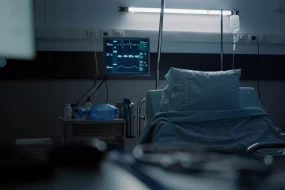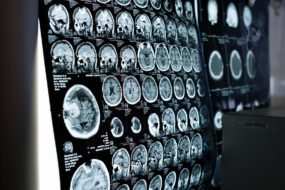
The study evaluated variations in intracranial pressure during prostate removal surgery; ICP monitoring can prevent possible postoperative complications
An article published in the Brazilian Journal of Anesthesiology presented results that suggest that prostate removal surgery (prostatectomy) negatively affects intracranial compliance, an indicator of neurological health related to the ability of intracranial components to adjust to variations in their internal volume. The study was carried out by a team from the Center for Anesthesiology and Resuscitation Studies (CEDAR) of the University of São Paulo (USP).
According to researcher Gabriela Saba, one of the authors of the paper, the goal of the experiment was to analyze the efficiency and reliability of a non-invasive technology to measure variations in intracranial pressure (ICP) during prostatectomy, which was used as an indicator for intracranial compliance. Surgery is commonly performed in elderly men, who are more likely to develop cognitive disorders resulting from increased ICP in the postoperative period, such as difficulties in reasoning and speech, and eventual ischemic complications.
In prostatectomy, gas is inflated into the abdominal cavity (pneumoperitoneum) and the patient remains at a maximum inclination of the operating table, that is, with the head lower than the body during the entire procedure. “These factors are critical for the increase in intracranial pressure”, comments Gabriela, an anesthesiologist graduated from the ABC School of Medicine with a residency at the USP School of Medicine. “For this reason, monitoring variations in ICP intraoperatively for prostatectomy is important, and our research is the first to do so,” she explains.
Clinical case
The study used as reference data collected from a non-invasive sensor during prostatectomy performed on a 69-year-old man who smoked for 25 years. The patient had a mild pulmonary emphysema and underwent a robotic prostatectomy. He was the first of a group of 48 patients to be evaluated in comparative trials with available non-invasive technologies to monitor variations in ICP.
The analysis indicated a normal intracranial compliance during anesthesia induction, through the analysis of two surrogate waveform peaks: P1, related to the systolic blood pressure transferred by the choroid plexus to the cerebrospinal fluid; and P2, relative to the parenchymal tissue of the systolic wave. “The academic study considered the entire evolution of ICP in the three hours of surgery. When P1 is higher than P2, compliance is normal. However, when P2 exceeds P1, it is a sign of possible intracranial hypertension”, observes Gabriela.
Conclusions
The study suggests the need for monitoring variations in intracranial pressure in the intraoperative process of prostatectomies, since there are large variations in ICP during surgery, which could potentially allow the early identification of impaired intracranial compliance and guide medical decisions from the diagnosis.
The study also demonstrated the potential of non-invasive intracranial pressure monitoring technology. “The mathematical analysis of intracranial pressure surrogate waveform eliminates the need for an invasive catheter. Studies with more participants will need to be carried out, but the surrogate ICP waveform analysis provided an important support for analysis of compliance”, concludes Gabriela.
Authored by the researchers Gabriela Tognini Saba, Vinicius Caldeira Quintão, Suely Pereira Zeferino, Claudia Marquez Simões, Rafael Ferreira Coelho, Arnaldo Fazoli, William Nahas, Gustavo Henrique Frigieri Vilela and Maria José Carvalho Carmona, the article “Noninvasive intracranial pressure real-time waveform analysis monitor during prostatectomy robotic surgery and Trendelenburg position: case report” was published on October 1, 2021 in the Brazilian Journal of Anesthesiology and can be retrieved through the DOI: 10.1016/j.bjane.2021.09.003.





